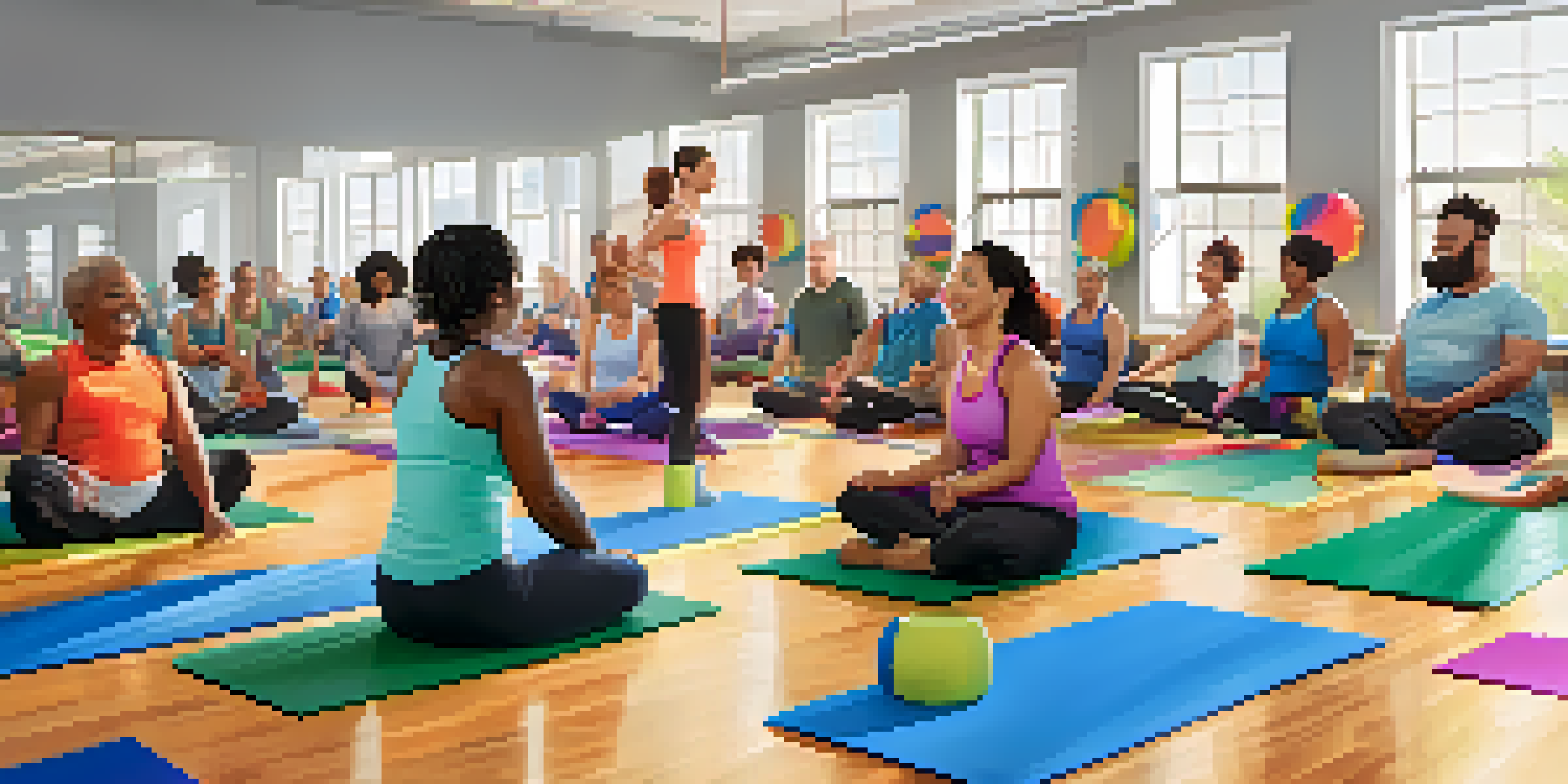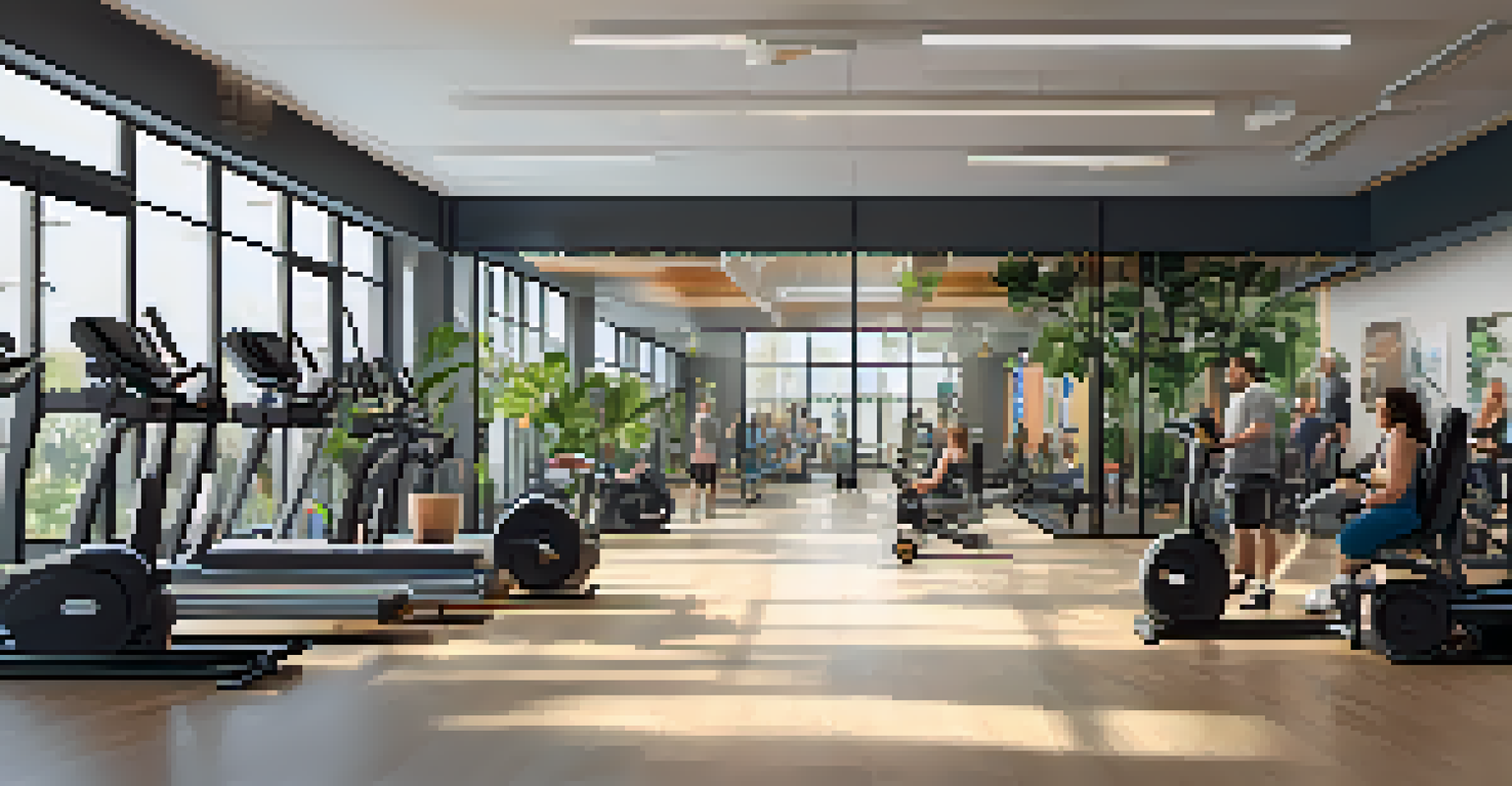Creating Inclusive Fitness Programs for All Abilities

Understanding the Importance of Inclusivity in Fitness
Inclusivity in fitness means ensuring that everyone, regardless of their physical or cognitive abilities, can participate. It's not just about making a gym accessible; it's about fostering an environment where individuals feel welcomed and valued. When fitness programs embrace inclusivity, they not only empower participants but also enrich the community as a whole.
Inclusivity means not just 'we're allowed to be here,' but 'we're welcomed.'
Imagine a fitness class where individuals of all abilities work together, share experiences, and motivate each other. This collaborative atmosphere breaks down barriers and creates friendships that extend beyond the gym walls. By prioritizing inclusivity, we can inspire people to lead healthier lives, regardless of their starting point.
Moreover, inclusive fitness programs can lead to increased member retention and satisfaction. Participants are more likely to return when they feel a sense of belonging and support. This not only benefits individuals but also strengthens the fitness community as a whole.
Identifying Diverse Needs and Abilities
To create inclusive fitness programs, we first need to understand the diverse needs and abilities of participants. This means recognizing that everyone has different challenges, whether they be physical disabilities, chronic conditions, or cognitive differences. By actively listening to individuals' experiences, we can tailor programs that cater to a wide range of abilities.

For example, when designing a workout routine, consider offering modifications for various exercises. A simple push-up can be adapted to knee push-ups or wall push-ups, making it accessible to everyone. This flexibility allows participants to engage at their own level while still feeling like part of the group.
Fostering an Inclusive Environment
Creating inclusive fitness programs empowers individuals and strengthens community bonds.
Additionally, conducting surveys or focus groups can help gather insights on what individuals need from a fitness program. Understanding these requirements is key to creating a truly inclusive environment where everyone can thrive.
Designing Accessible Spaces and Equipment
A crucial step in creating inclusive fitness programs is ensuring that the physical space and equipment are accessible to all. This includes everything from installing ramps and elevators to ensuring that workout machines can be used by individuals with different abilities. Thoughtful design can make a significant difference in how people experience fitness spaces.
Diversity is being invited to the party; inclusion is being asked to dance.
Consider, for instance, using adjustable equipment that can be modified for different heights and abilities. This way, whether you're in a wheelchair or have limited mobility, you can still access the same equipment as everyone else. Such considerations not only enhance the experience but also promote equality in fitness.
Moreover, incorporating sensory-friendly spaces can help individuals with sensory processing disorders feel more comfortable. By offering quiet areas or using softer lighting, we create an environment where everyone can participate without feeling overwhelmed.
Incorporating Adaptive Fitness Programs
Adaptive fitness programs are specifically designed to meet the needs of individuals with disabilities. These programs focus on modifying traditional exercises to ensure that everyone can participate safely and effectively. By incorporating adaptive programs, fitness facilities can cater to a broader audience and demonstrate their commitment to inclusivity.
For instance, a chair yoga class can provide a low-impact option for those with mobility challenges while still delivering the benefits of yoga. Participants can enjoy improved flexibility and relaxation without feeling excluded from traditional classes. This kind of adaptability encourages individuals to explore new fitness avenues.
Adapting to Diverse Needs
Understanding and addressing the varied abilities of participants ensures everyone can engage in fitness activities.
Additionally, having trained instructors who understand adaptive techniques is essential. These professionals can guide participants through modifications and provide support, ensuring a positive and empowering experience.
Promoting Social Interaction and Community Building
Creating an inclusive fitness program goes beyond just physical activity; it also involves fostering social interaction among participants. Building a sense of community can significantly enhance the overall experience, making individuals feel more connected and engaged. Social bonds can motivate people to stick with their fitness journeys and encourage them to support one another.
Consider organizing group workouts, challenges, or social events that encourage participants to interact. These activities not only help break the ice but also promote camaraderie. When individuals feel like they’re part of a team, they're more likely to remain committed to their fitness goals.
Moreover, showcasing success stories within the community can inspire others. Celebrating the achievements of diverse participants cultivates an environment of positivity and encouragement, reinforcing the idea that fitness is for everyone.
Training Staff for Inclusivity and Sensitivity
Staff training is a vital component of creating inclusive fitness programs. Educating employees about the diverse needs of participants and how to accommodate them fosters a supportive atmosphere. This training should cover not only physical adaptations but also communication strategies that respect everyone's dignity.
For example, staff should learn how to interact with individuals with disabilities in a respectful manner, using appropriate language and tone. This small adjustment can significantly impact how participants feel in the gym, making them more comfortable and willing to engage.
Continuous Feedback for Growth
Regularly gathering participant feedback helps refine programs and enhance inclusivity over time.
Moreover, ongoing training ensures that staff stay updated on best practices for inclusivity. By creating a culture of learning and sensitivity, fitness facilities can continually improve their programs and better serve their communities.
Gathering Feedback for Continuous Improvement
Creating inclusive fitness programs is an ongoing journey. Regularly gathering feedback from participants is essential to understand their experiences and identify areas for improvement. This process not only demonstrates that you value their input but also helps tailor programs to meet their evolving needs.
Consider implementing anonymous surveys or suggestion boxes where participants can share their thoughts. This feedback can provide valuable insights into what aspects of the program are working well and what could be enhanced. Listening to your community is key to fostering a truly inclusive environment.

Additionally, holding periodic focus groups can facilitate deeper discussions and allow for more nuanced feedback. By actively engaging with participants, you can continually refine your approach to ensure that everyone feels welcome and supported in their fitness journey.